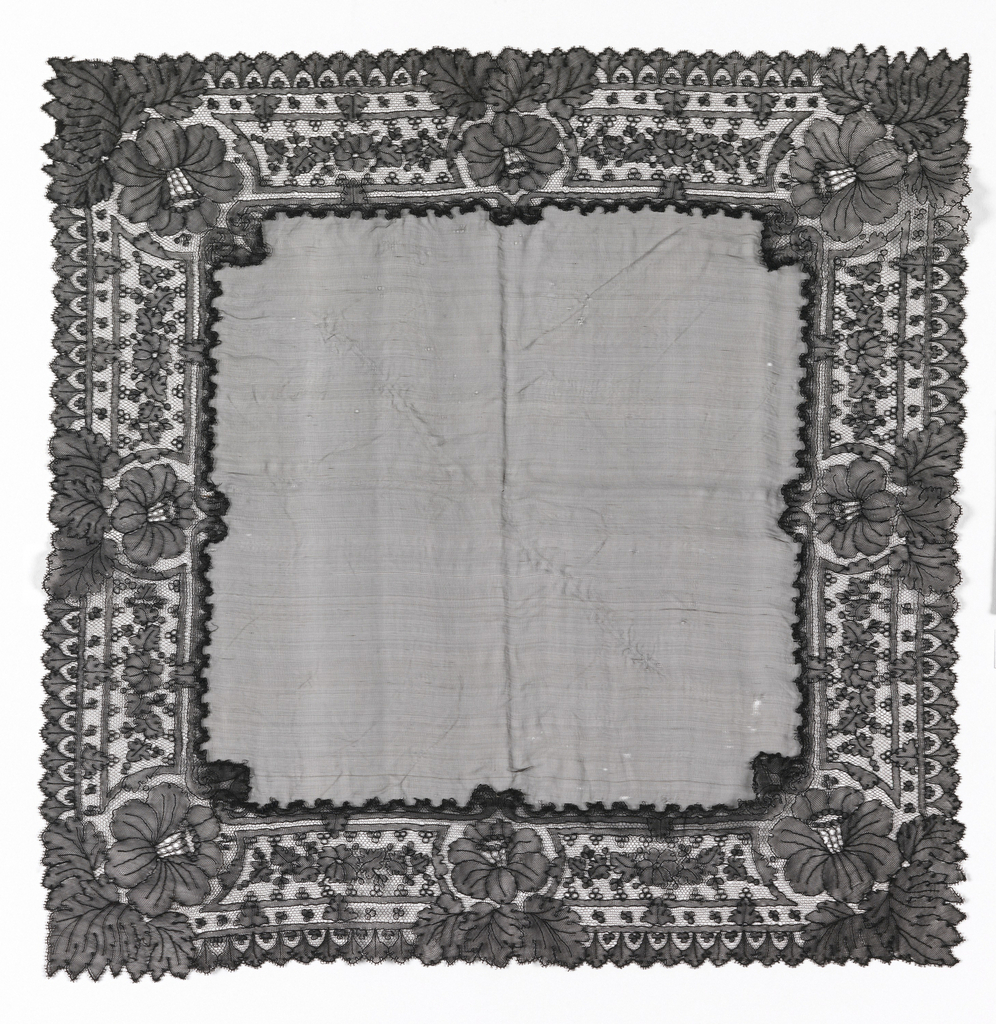There are 2 other images of this object. This image is in the public domain (free of copyright restrictions), and as such we offer a high-resolution image of it. See our image rights statement.
See more objects with the color darkgrey or see all the colors for this object.
Object Timeline
|
1951 |
|
|
2013 |
|
|
2015 |
|
|
2024 |
|
Mourning Handkerchief (France)
This is a Mourning handkerchief. It is dated 19th century and we acquired it in 1951. Its medium is silk and its technique is bobbin lace, chantilly style. It is a part of the Textiles department.
Mourning in the nineteenth century was a serious business on many levels. The visual codes that indicated a state of mourning were myriad, but nothing expressed and conveyed the experience of loss and sadness more than the clothing and accessories of the period. When a woman gave up her everyday fashions for mourning attire, she was still expected to adopt the latest fashionable silhouette and accessories, albeit all in black, for the first phase of the mourning period. This mourning handkerchief, a black silk square bordered with black Chantilly lace, would have been a most suitable accessory for a fashionable mourning ensemble as the popularity of black lace endured for much of the nineteenth century.
This object was
donated by
Miss Frances Morris.
It is credited Gift of Frances Morris.
- Handkerchief, In Memoriam
- cotton.
- Gift of Paul F. Walter.
- 2008-21-1
- Adinkra Ceremonial Wrapper (Ghana)
- cotton.
- Bequest of Mary Kirby.
- 1962-123-2
Its dimensions are
H x W: 37.1 x 37.1 cm (14 5/8 x 14 5/8 in.)
Cite this object as
Mourning Handkerchief (France); silk; H x W: 37.1 x 37.1 cm (14 5/8 x 14 5/8 in.); Gift of Frances Morris; 1951-111-76


